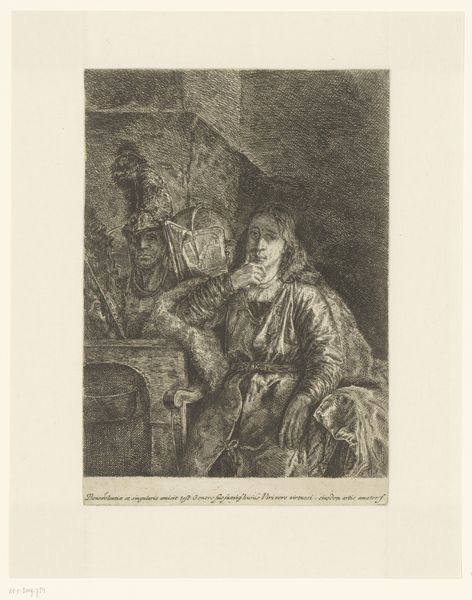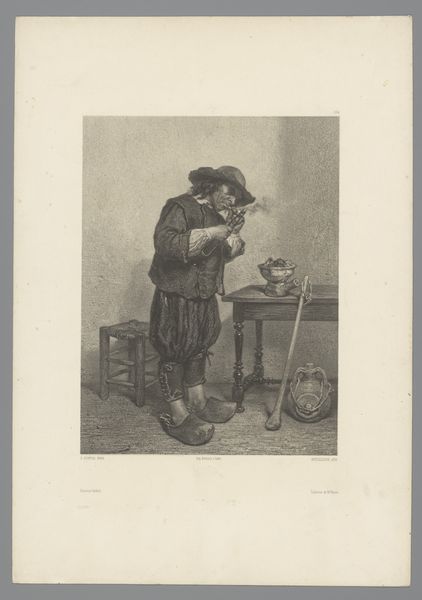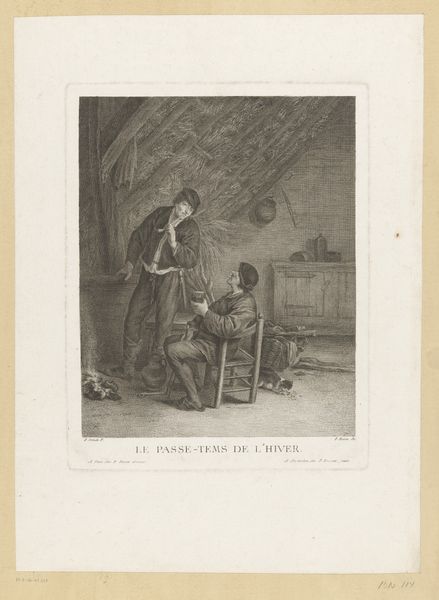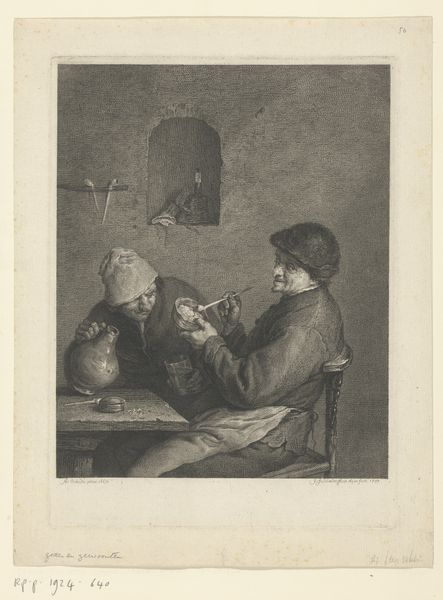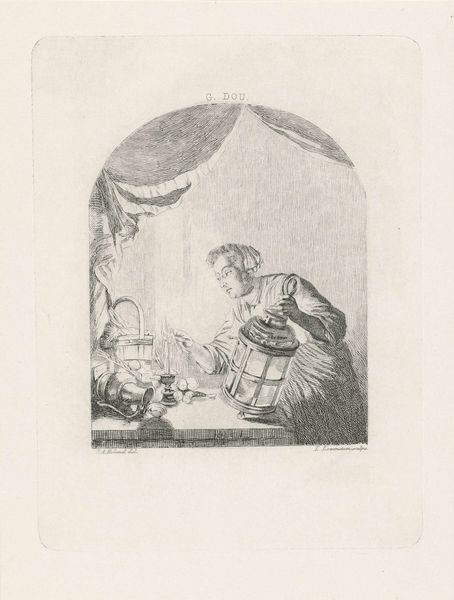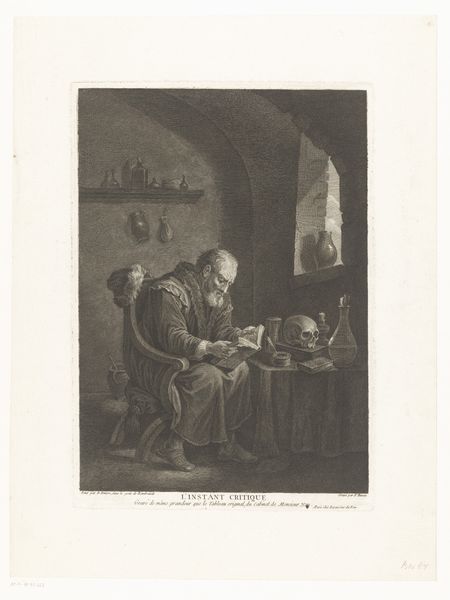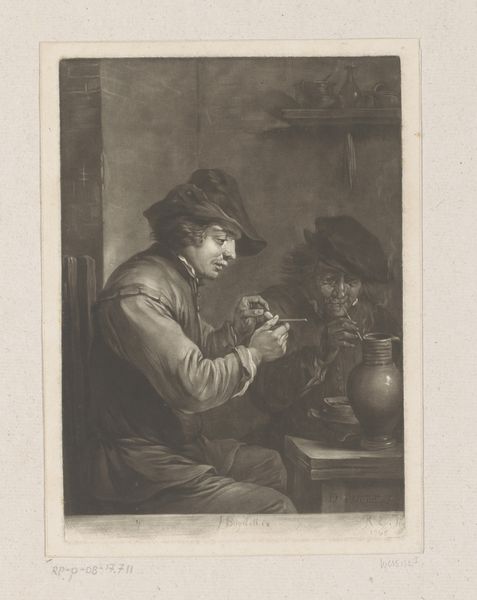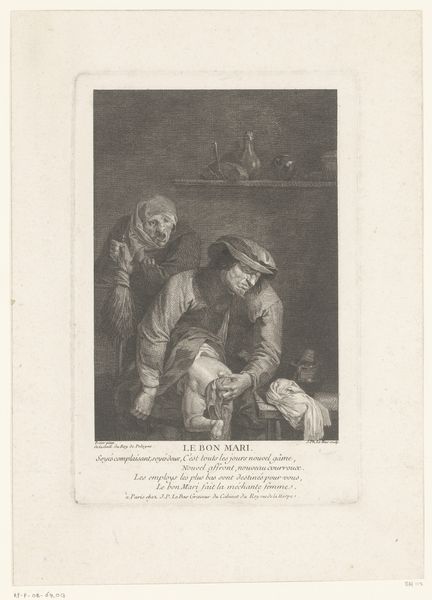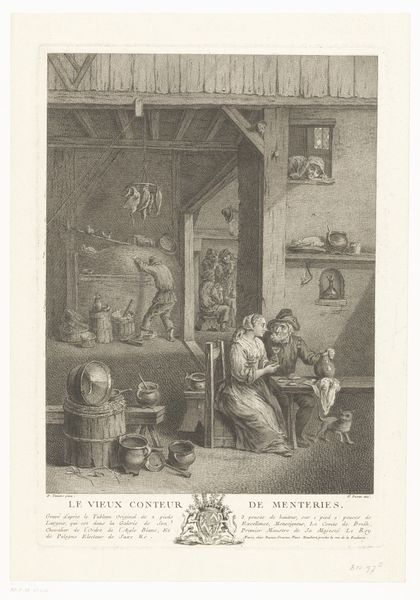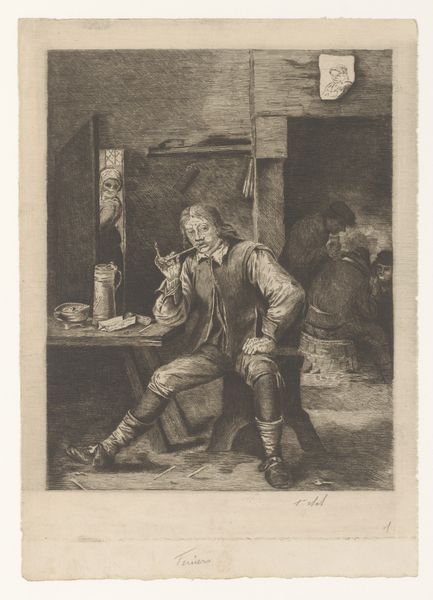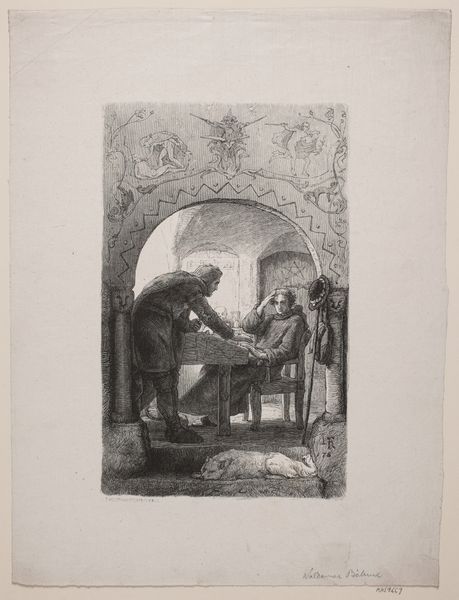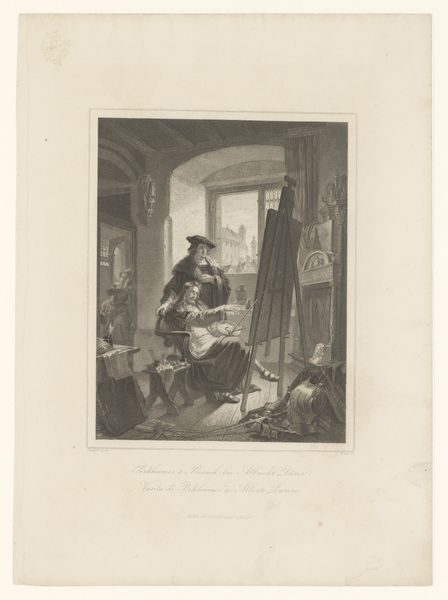
print, engraving
#
portrait
#
baroque
# print
#
old engraving style
#
genre-painting
#
engraving
#
realism
Dimensions: height 254 mm, width 183 mm
Copyright: Rijks Museum: Open Domain
Curator: Here we have "Rokende man voor een openhaard stopt zijn pijp," or "Smoking Man Stopping His Pipe Before a Fireplace," an engraving by Jacques Philippe Le Bas, dating from around 1747. It's currently held here at the Rijksmuseum. What's your first impression? Editor: The overwhelming mood is one of domesticity, but not necessarily comfort. The lighting is dim and there's a pervasive sense of stillness. It feels like we’re observing a private moment, one loaded with social implications from the trappings of class in the subject’s attire. Curator: Precisely. Le Bas was a renowned reproductive engraver, meaning he primarily created prints based on other artists’ paintings. This one likely aimed to disseminate genre paintings depicting everyday life to a wider audience. These kinds of depictions were really taking hold during that period. Editor: And it's essential to remember for whom such scenes were being produced and consumed. Genre scenes may appear innocuous, but they are documents reflecting a very specific class’s perception and construction of ‘normal’ life. Notice the man’s clothing – simple, yet proper, evoking the ‘common man,’ but very much fashioned and constructed for the bourgeois gaze. Curator: Absolutely. Consider the act of smoking itself – tobacco was, by this point, a global commodity entangled with colonialism and exploitation. To show a man casually enjoying his pipe glosses over those darker realities and instead reinforces a sense of relaxed bourgeois enjoyment. Editor: I wonder, too, about the second figure, relegated to the background near the shelf, partially obscured. His anonymity raises questions of class and servitude – a subtle, perhaps unconscious acknowledgement of the labor underpinning even these simple domestic scenes. Curator: A valid observation. The contrast in focus certainly emphasizes the smoker as the primary subject and obscures the other man in a secondary state of focus, perhaps just working to keep that very fire aflame for the leisured enjoyment of the first. Editor: I appreciate the print's accessibility. It offers insight into 18th-century life and the ways in which seemingly quotidian images participate in broader power dynamics. It challenges us to unpack our own complicity, because how different are social-media curated ‘authenticity’ and staged scenes of everyday people and their carefully designed spaces? Curator: Indeed, its ability to reveal complexities within the seemingly simple remains strikingly potent today, inviting reflections about visual representation and class that continue to resonate.
Comments
No comments
Be the first to comment and join the conversation on the ultimate creative platform.

